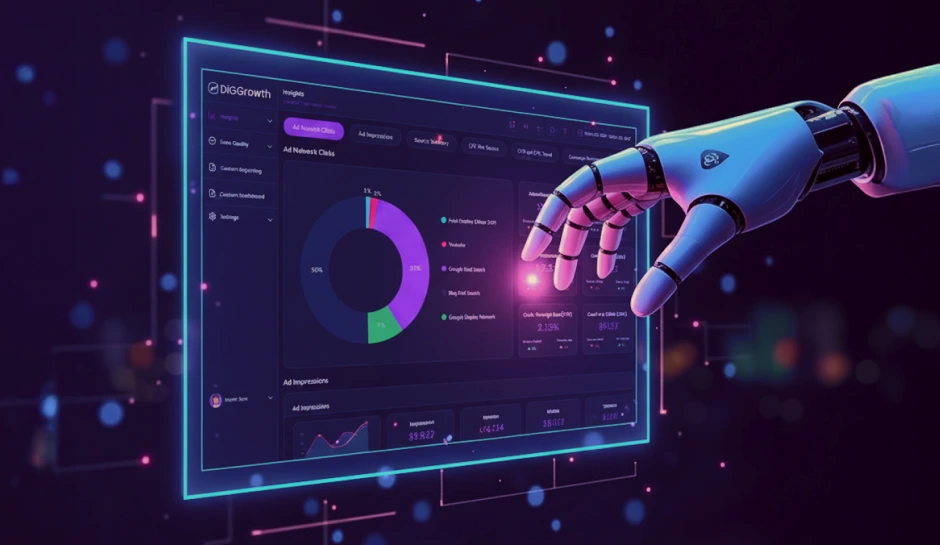
Media Mix Modeling vs Multi-Touch Attribution: A Detailed Comparison
Today, businesses must strive to understand the effectiveness of their various channels in allocating budgets efficiently and maximizing ROI. Media Mix Modeling (MMM) and Multi-Touch Attribution (MTA) are two predominant methodologies used for this purpose. While MMM focuses on long-term trends using aggregated data, MTA provides granular insights into individual touchpoints for real-time optimization. This article explores both approaches' strengths, weaknesses, and applications to help marketers choose the right strategy for their needs.
In today’s complex marketing landscape, businesses strive to understand the effectiveness of their various marketing channels to allocate budgets efficiently and maximize ROI. Media Mix Modeling (MMM) and Multi-Touch Attribution (MTA) are the predominant methodologies used for this purpose. Each method has its strengths, weaknesses, and applications. This article will provide a detailed comparison of MMM and MTA to help marketers choose the right approach for their needs.
Media Mix Modeling (MMM)
Media Mix Modeling is a statistical analysis technique used to estimate the impact of various marketing channels on sales and other key performance indicators (KPIs). It leverages historical data, such as sales figures and marketing expenditures, to create a regression model that quantifies the contribution of each marketing channel to overall business outcomes.
Key Features
Aggregated Data
MMM works with aggregated data, typically on a weekly or monthly basis. This level of aggregation makes MMM particularly suitable for long-term strategic planning rather than for making real-time adjustments. For example, an MMM analysis might use monthly data to assess how TV advertising, digital marketing, and print media collectively drive sales over a year.
Channel Impact
MMM provides insights into the overall impact of traditional and digital media channels, including TV, radio, print, and online ads. By quantifying each channel’s contribution, marketers can understand which channels are most effective and how they interact with each other.
External Factors
MMM can incorporate various external factors, such as seasonality, economic conditions, and competitive actions. For instance, sales are the right seasoning for the holiday season due to increased consumer spending. MMM models can adjust for these seasonal effects to isolate the true impact of marketing activities.
Lagged Effects
Marketing activities often have delayed effects. For example, a TV ad campaign might not immediately increase sales. Still, it could build brand awareness that drives sales weeks or months later. MMM accounts for these lagged effects, providing a more accurate picture of how marketing efforts influence business outcomes over time.
Advantages
Long-Term Insights
MMM is ideal for understanding long-term trends and the overall effectiveness of different media channels. It helps in strategic planning and budget allocation by identifying which channels contribute most to long-term growth.
Holistic View
MMM provides a comprehensive analysis by considering external factors and interaction between channels. This holistic view helps businesses understand the broader context of their marketing efforts.
Scalability
MMM can handle large datasets and multiple variables, making it suitable for large enterprises with diverse marketing activities. This scalability allows for a detailed and robust analysis of complex marketing ecosystems.
Disadvantages
Granularity
MMM needs to have the granularity to measure the effectiveness of individual touchpoints within a customer journey. It provides a high-level overview rather than detailed insights into specific customer interactions.
Data Requirements
MMM requires extensive historical data, which can be complex to gather, clean, and maintain. This data must cover several years to capture trends and various factors’ impact accurately.
Latency
The insights from MMM are not real-time. There often must be a delay between data collection, analysis, and action. By the time insights are derived, market conditions may have changed, reducing the immediacy of the findings.
Multi-Touch Attribution (MTA)
Definition
Multi-touch attribution (MTA) assigns credit to multiple touchpoints in the customer journey, from initial awareness to final conversion. MTA uses user-level data to track interactions across various channels and devices, providing a detailed view of how different touchpoints contribute to conversions.
Key Features
User-Level Data
MTA leverages granular data, tracking user interactions across multiple touchpoints and channels. This fine level of detail allows marketers to see exactly how each interaction influences the customer’s path to conversion.
Attribution Models
MTA employs various attribution models to distribute credit for conversions. These models include:
- First-Touch Attribution:
- Last-Touch Attribution:
- Linear Attribution:
- Time-Decay Attribution:
- Algorithmic Attribution:
Credit is given to the first touchpoint.
Credit is given to the last touchpoint.
Credit is distributed equally across all touchpoints.
More credit is given to touchpoints closer to the conversion.
Credit is assigned based on a data-driven model that determines the contribution of each touchpoint.
Real-Time Insights
MTA offers near real-time insights, allowing marketers to adjust campaigns quickly based on performance. This capability is crucial for optimizing active campaigns and promptly responding to market dynamics.
Cross-Device Tracking
MTA tracks user interactions across different devices, providing a comprehensive view of the customer journey. This cross-device capability ensures that all relevant touchpoints are accounted for, even when users switch between devices.
Advantages
Granularity
MTA provides detailed insights into individual touchpoints, enabling marketers to optimize specific interactions and campaigns. This granularity helps in understanding the effectiveness of each interaction and improving customer engagement strategies.
Real-Time Optimization
Analyzing data in near real-time allows for agile adjustments to marketing strategies. Marketers can quickly identify and capitalize on successful tactics while addressing underperforming areas.
Customer Journey Analysis
MTA helps understand the customer journey, identifying key touchpoints driving conversions. This analysis supports the creation of more targeted and effective marketing strategies.
Disadvantages
Complexity
MTA implementation can be technically complex, requiring sophisticated tracking and integration across multiple platforms. Setting up and maintaining an MTA system can be resource-intensive and require specialized expertise.
Privacy Concerns
With increasing privacy regulations, tracking user-level data can be challenging, and compliance issues may arise. Marketers must navigate data privacy laws and ensure their attribution practices respect user privacy.
Channel Limitations
MTA is more effective for digital channels and may need help to accurately measure the impact of traditional media like TV and print. If traditional media plays a significant role, these limitations can lead to an incomplete view of the marketing ecosystem.
Comparing Media Mix Modeling and Multi-Touch Attribution
Use Cases
- MMM:
- MTA:
Best suited for strategic, long-term planning and budgeting across all media channels, including traditional media.
Ideal for tactical, short-term optimization of digital campaigns and understanding specific customer journey touchpoints.
Data Requirements
- MMM:
- MTA:
Requires aggregated historical data, often spanning several years.
Depends on granular, user-level data collected in real time.
Analytical Approach
- MMM:
- MTA:
Uses regression analysis to estimate the impact of each channel on overall sales and KPIs.
Employs various attribution models to assign credit to different touchpoints in the customer journey.
Timeframe
- MMM:
- MTA:
Focuses on long-term effects and trends, typically using data weekly or monthly.
Provides near real-time insights, focusing on short-term performance and immediate optimization.
Conclusion
Media Mix Modeling and Multi-Touch Attribution offer valuable insights for marketers but serve different purposes. MMM is ideal for strategic, long-term planning and understanding the overall impact of all marketing channels, including traditional media. In contrast, MTA is best suited for tactical, short-term optimization of digital campaigns and analyzing specific customer journey touchpoints.
Marketers should consider their needs, resources, and objectives when choosing between MMM and MTA. In many cases, a hybrid approach that leverages the strengths of both methodologies can provide a comprehensive understanding of marketing effectiveness and drive better decision-making.
By understanding the differences and applications of MMM and MTA, businesses can make more informed decisions, optimize their marketing strategies, and ultimately achieve better ROI.
Ready to get started?
Increase your marketing ROI by 30% with custom dashboards & reports that present a clear picture of marketing effectiveness
Start Free Trial
Experience Premium Marketing Analytics At Budget-Friendly Pricing.

Learn how you can accurately measure return on marketing investment.
Additional Resources
How Predictive AI Will Transform Paid Media Strategy in 2026
Paid media isn’t a channel game anymore, it’s...
Read full post postDon’t Let AI Break Your Brand: What Every CMO Should Know
AI isn’t just another marketing tool. It’s changing...
Read full post postFrom Demos to Deployment: Why MCP Is the Foundation of Agentic AI
A quiet revolution is unfolding in AI. And...
Read full post postFAQ's
MMM focuses on long-term trends using aggregated data to understand the overall impact of various marketing channels on sales. It is suitable for strategic planning and budget allocation. Conversely, MTA provides granular insights into individual touchpoints within the customer journey, enabling real-time optimization of digital campaigns by tracking user-level interactions across multiple channels and devices.
MMM is best suited for strategic, long-term planning and budgeting across all media channels, including traditional media like TV, radio, and print. It helps understand the overall impact of different marketing channels on sales and other key performance indicators (KPIs) over an extended period.
MTA offers several advantages, including: Detailed insights into individual touchpoints, allowing for specific interaction and campaign optimization. Near real-time insights for agile adjustments to marketing strategies. Comprehensive analysis of the customer journey, identifying key touchpoints driving conversions. Enhanced understanding of how different channels and touchpoints contribute to customer conversion.
MMM requires aggregated historical data, often spanning several years, including sales figures, marketing expenditures, and external factors like economic conditions. MTA depends on granular, user-level data collected in real-time, tracking interactions across multiple touchpoints and devices.
MMM has several limitations, such as: Lack of granularity to measure the effectiveness of individual touchpoints within the customer journey. High data requirements and complexity in data gathering, cleaning, and maintenance. Latency in insights, as MMM, typically uses aggregated data and provides long-term trends rather than real-time adjustments.
Yes, a hybrid approach leveraging both MMM and MTA can provide a comprehensive understanding of marketing effectiveness. MMM can guide strategic, long-term planning and budget allocation across all media channels. At the same time, MTA can optimize specific digital campaigns and touchpoints in real-time. This combined approach enables better decision-making and maximizes ROI by utilizing the strengths of both methodologies.


